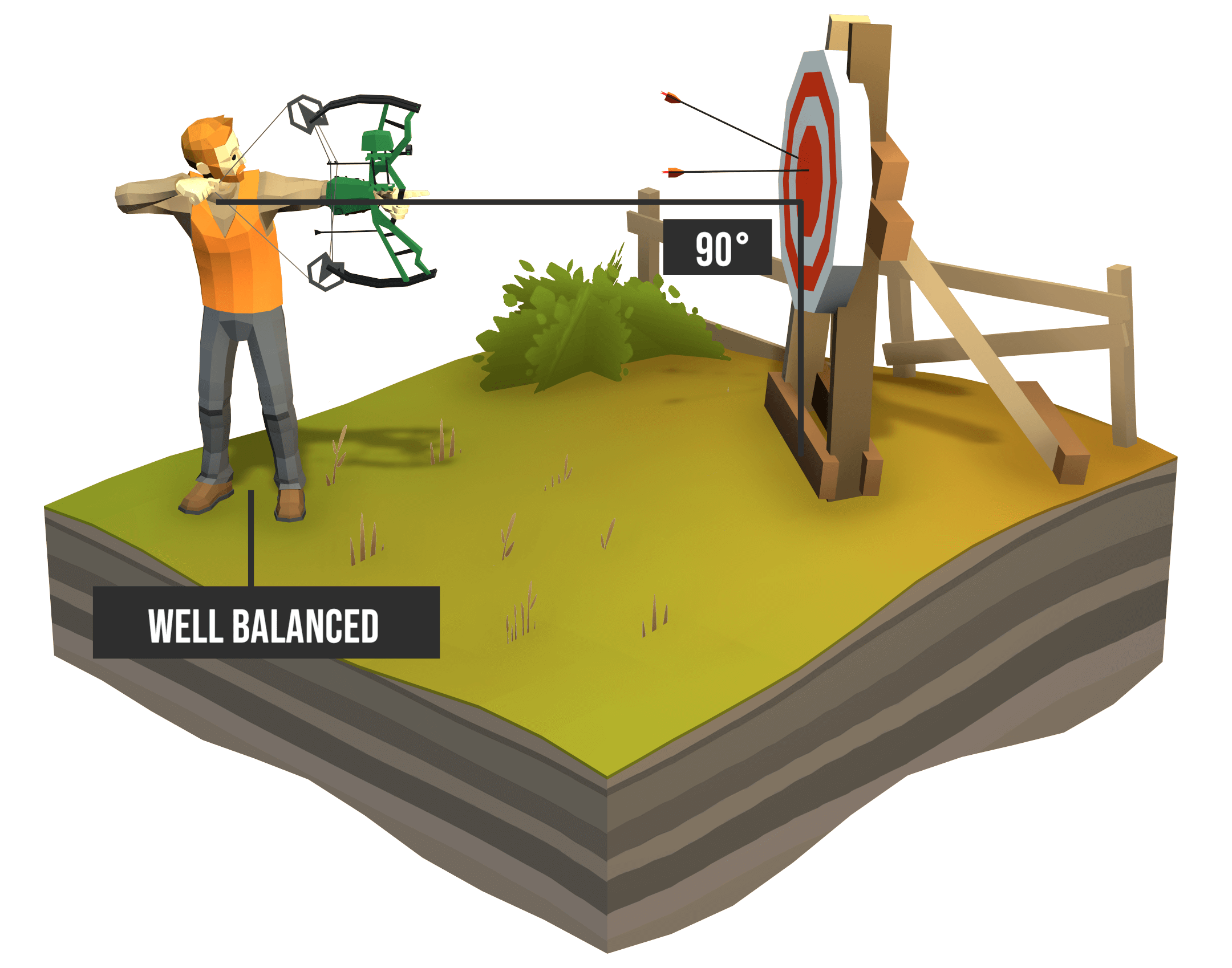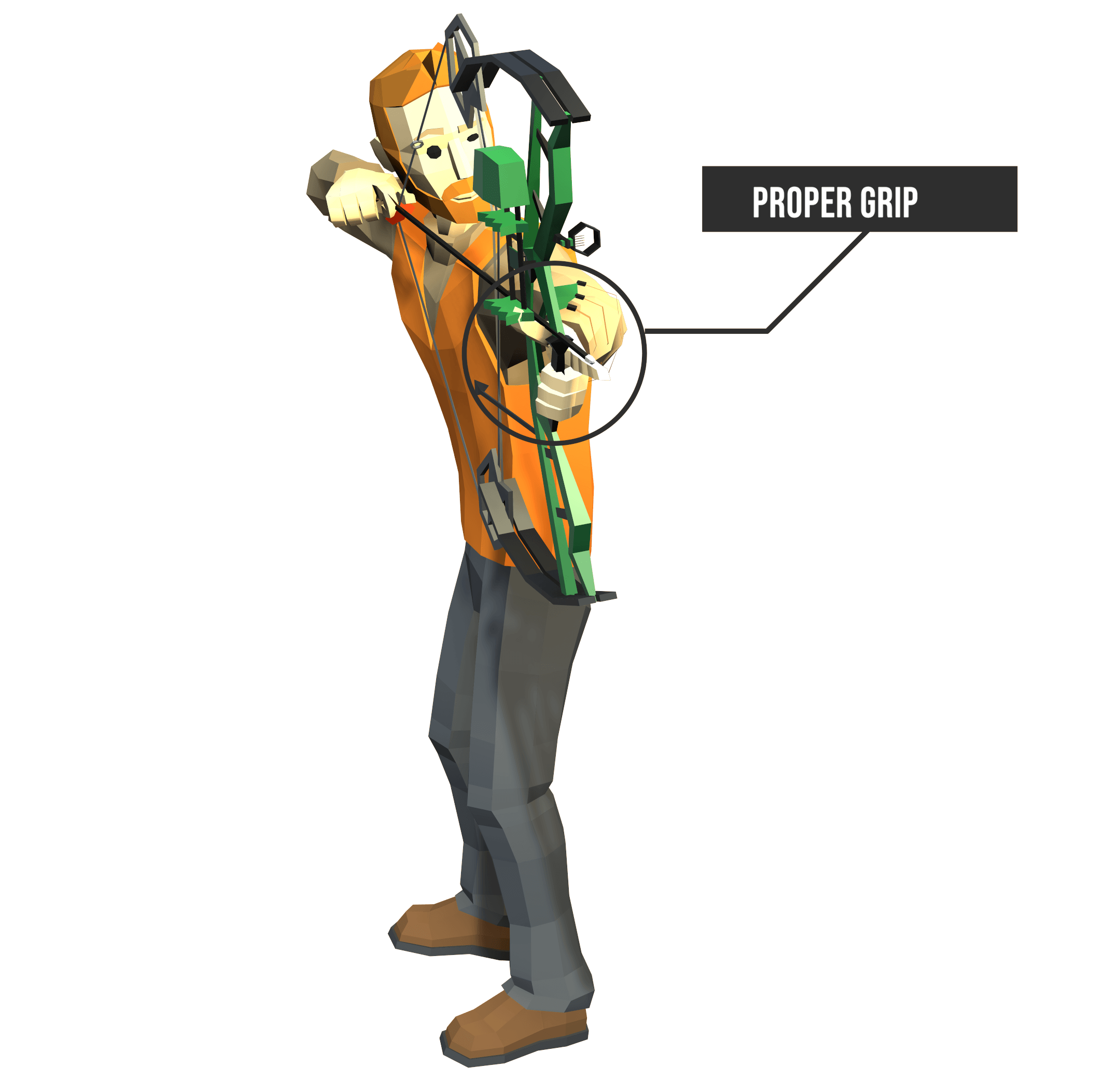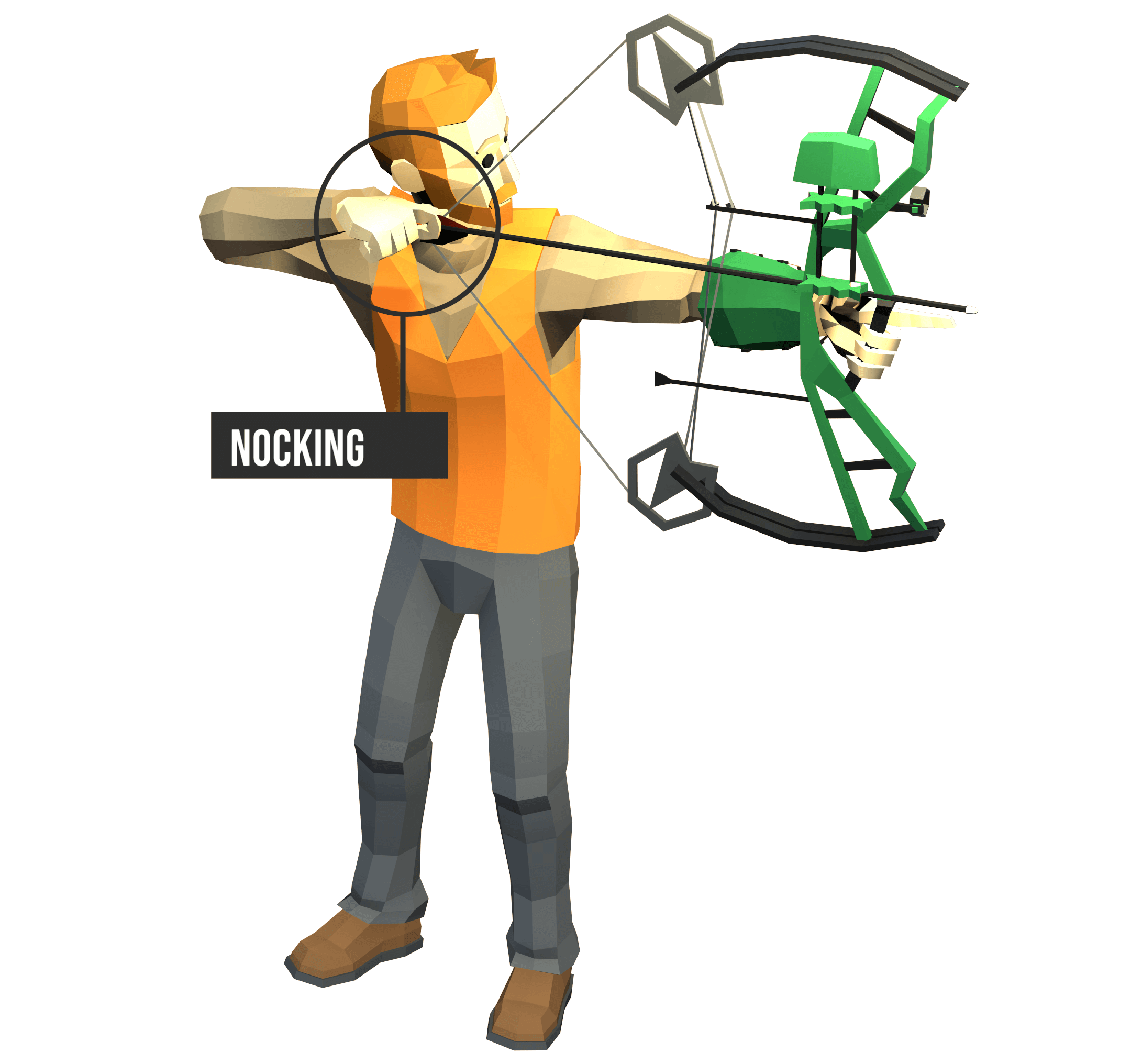How to shoot a bow and arrow? Position - Holding the Bow - Nocking the Arrow - Drawing the Bow
Position or Stance

There are seven basic steps involved in becoming a good archer. The following steps are for right-handed shooters, reverse directions for left-handed shooters.
Position your body at a 90 degree angle to the target. Many archers prefer a stance that is less than 90 degrees or more "open" to the target. Spread feet comfortably apart with body weight equal on both legs. Your shoulders should line up with an imaginary line drawn from the center of the target. A comfortable stance is important.
Holding the Bow

The bow should be able to move freely after an arrow is released. Proper bow grip is achieved by forming a "V" by the thumb and forefinger. To get relaxed grip, many archers use a bow sling to prevent the bow from falling out of their hand upon release. Do not grip the bow tightly.
Nocking the Arrow

Hold the bow in the left hand with the arrow rest up. Place the arrow nock on the string at the nocking point. Draw the arrow toward the bowstring until the string sits firmly in the arrow nock. If your nock fits properly, you should hear a small click or snap when the string seats in the nock.
Drawing the Bow

For those using a release aid, the release is normally attached to the string below the arrow. The string is drawn back to a consistent anchor point.
For finger shooters, the bow string is normally drawn back using the first three fingers of the right hand. The nock should be between the index and middle fingers. Draw the string back until the index finger on the right hand is "anchored." The same anchor point is used each time you draw the bow. Using different anchor points will result in poor shooting.
Aiming
Most bowhunters shoot instinctively or with sights. Instinctive shooters, simply pick the spot they wish to hit. Keeping both eyes on that spot, they raise the bow and release when it feels right. This is very similar to throwing a ball and takes considerable practice. The bow is usually canted or tilted when shooting instinctively.
Those who use sights begin the same way by picking the spot they wish to hit. The bow is then raised, drawn and the sight pin that corresponds to the distance of the target is placed on the spot to hit. The bow is normally held straight up and down for sight shooters using sights.
Many archers who use sights also use a peep sight installed in the string through which they center the sight pin. This system is very similar to peep sights on a rifle.
When sighting in a bow using sights, you must move the sight pins in the same direction the errant shots are going. In other words, if arrows are hitting low, move the sight pin down. If to the right, move the pin to the right, etc.
Release
Except for instinctive shooters who normally draw and release in one motion, the bow is held at full draw long enough to achieve accurate aim. After taking a deep breath and holding it, the three draw fingers are relaxed, allow the bowstring to be released smoothly. To ensure consistency the same form of release must be used at all times. Try to picture in your mind where you want the arrow to strike before you release it. Do not try to watch your arrow fly.
Follow-through
As in any other sport, follow-through is important. To become accurate, the bow hand and string hand must remain where they are until the arrow hits the target. Practice this discipline to shoot well.
DOs & DON'Ts
DOs:
- Clearly identify your target and what is beyond. An arrow can travel quite a distance if it misses the target.
- Be sure that your equipment is in good working condition. Cracked arrows should be discarded. Change any frayed bowstrings and replace bows with cracked or twisted limbs.
- Use quivers that protect arrow heads. Some open-topped quivers are dangerous and should be avoided.
- Store conventional bows in an unstrung position when not in use. All archery equipment should be stored to eliminate misuse by untrained people.
- Ensure that all broadheads are "razor sharp."
- Use a full body safety harness and haul line when hunting from a tree stand.
- Use caution when field dressing a big game animal. A broadhead may be embedded in the body cavity.
- Use caution at all times when stringing or removing a string from a bow. The bow limbs are under high tension. Improper handling can cause serious injury.
- Conduct yourself in a responsible manner at all times while bow hunting.
- Always obey the ten commandments of firearm safety.
DON'Ts:
- Nock an arrow, or draw a bow when facing someone.
- Dry fire a bow (draw and release a bow without an arrow in it). The vibrations released by a dry-fired bow may break its limbs and cause serious injury to the shooter.
- Shoot an arrow straight up in the air. Serious injury to yourself or someone else may result from a falling arrow when you lose sight of it and don't know where it will land.
- Carry an arrow nocked in the bowstring. Remove nocked arrows whenever you cross an obstacle or climb a tree.
A note on Elevated Stands

Tree stands are used for all types of hunting but most often by bowhunters. Most bowhunting accidents are a result of carelessness around tree stands. Take your time when using a treestand.
When climbing into a tree stand, you should always attach all equipment to a haul line. Lay the haul line off to the side so that in the event of a fall you do not land on top of the equipment.
Attach yourself to the tree with a full body safety harness. Climb to the predetermined height and ensure that your stand is secure. Do not use a rope for a harness as they can slip in a fall and tighten around your chest causing suffocation.
Safely harnessed to the tree you can then haul up your gear with the haul line. We strongly recommend taking an advanced bowhunter education program. Contact your local wildlife agency if you're interested in taking an advanced bowhunter education program.